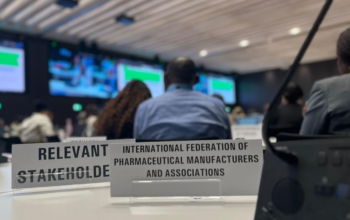Ramping up and sustaining the production of vaccines
It is difficult to predict the nature of the next health threat. We do not know where, how or when it will hit. What we know is that playing catch is a lost battle.
In a matter of months, vaccine developers and manufacturers have developed multiple COVID-19 vaccines and forged collaborations to ramp up production. Decades of scientific exploration and investment enabled technologies such as mRNA and viral vector COVID-19 vaccines. But next time we can be even faster, if there is sufficient, sustainable financing and technical assistance to support early procurement and country readiness.
Building back better
The world must be prepared to prevent the next “Disease X” from becoming a pandemic. The G7 agreed to a vision for a 100-day response to an emerging threat, shrinking the already unprecedented 326 days achieved for first COVID-19 vaccine approval.
The biopharmaceutical industry has committed to invest in R&D on pathogens with pandemic potential and to build a portfolio of promising candidate vaccines. It will also continue to invest in “established” and new mRNA technologies, seeking ways to strengthen immune response and duration of protection whilst looking at reducing manufacturing complexity.
Industry will play its part alongside other key stakeholders to be as well prepared as we can be. It will require a multi-layered effort to build systems, infrastructure and an effective global governance to ensure relevant stakeholders are utilized, coordinated, and integrated around agreed shared objectives. A comprehensive multilateral commitment for immediate sharing of pathogens and data is needed to ensure that no time is lost, alongside global clinical trial infrastructure, regulatory convergence and reliance.
Upscaling vaccines for pandemic preparedness
In building back better, we aim for enough vaccines to be produced, for deployment around the world within the first 100 days of a pandemic. A strategic vision and roadmap for flexible, sustainable global manufacturing capacity needs to be developed with relevant public and private stakeholders, accounting for the extensive COVID-19 vaccine production capacity, location of new capacity across all regions, and expert staff ready to deliver surge volumes when needed.
Creating demand for vaccine manufacturing capacities during inter-pandemic times
The goal should be to achieve a healthy market dynamic over time, including in inter-pandemic periods that provides appropriate incentives to balance global access and innovation. Demand for lifelong immunization will not only improve health and wellbeing but will also build the needed vaccine delivery infrastructure, and sustain manufacturing capacity.
This op-ed was originally published for Media Planet Value of Vaccines campaign on 9 December 2021.
Author






